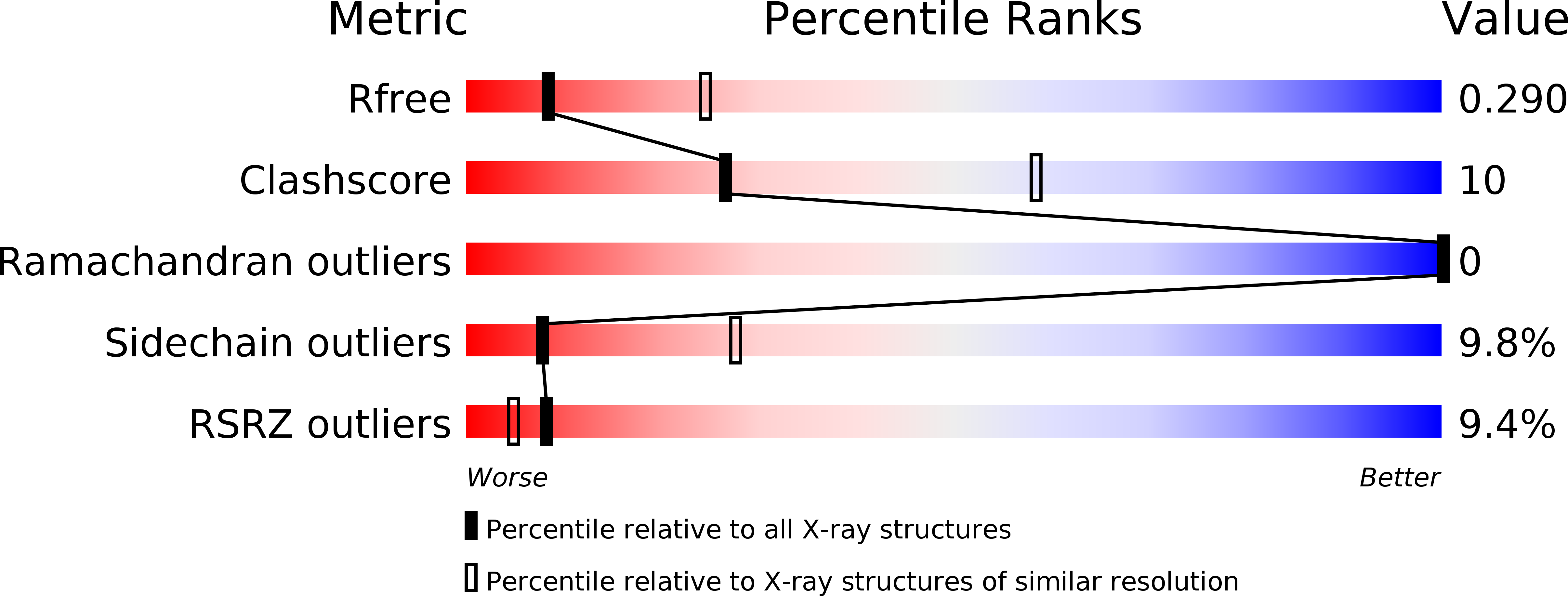
Deposition Date
2019-06-22
Release Date
2020-07-08
Last Version Date
2024-01-24
Entry Detail
PDB ID:
6S2V
Keywords:
Title:
Structure of the N-terminal catalytic region of T. thermophilus Rel
Biological Source:
Source Organism:
Thermus thermophilus (Taxon ID: 274)
Host Organism:
Method Details:
Experimental Method:
Resolution:
2.96 Å
R-Value Free:
0.27
R-Value Work:
0.22
R-Value Observed:
0.22
Space Group:
P 41 21 2


